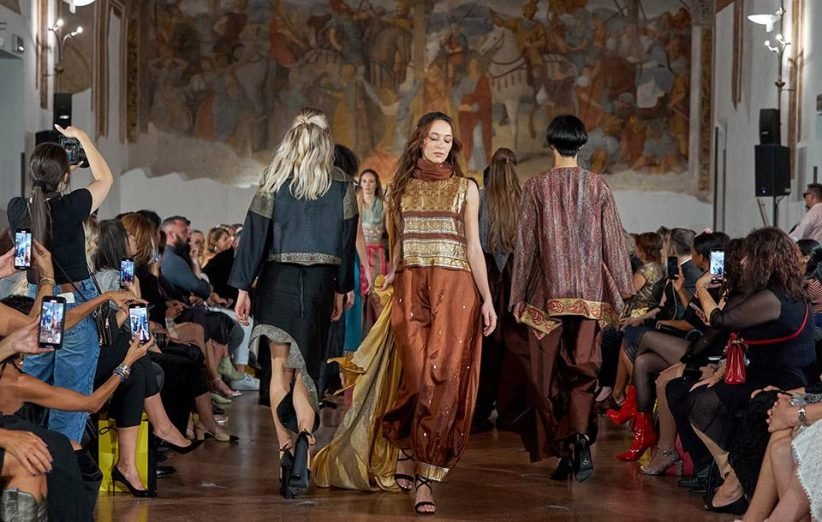If you take a look at the carpet beneath your feet—provided it’s not a modern design—you’ll likely spot one of the Shah Abbasi floral motifs. A heart-shaped circle at the center of the flower, with a rounded form and inward spirals, stands in beautiful contrast to the sharp-edged leaves around the border, creating a unique elegance born from this very contrast. After all, isn’t it true that every form of beauty in this world arises from contrast? Don’t you think so?
Let’s return to the Shah Abbasi motifs, which are typically used in dominant and recessive forms, often appearing as four-, five-, or six-petal patterns across the field or borders of traditional Persian carpets.
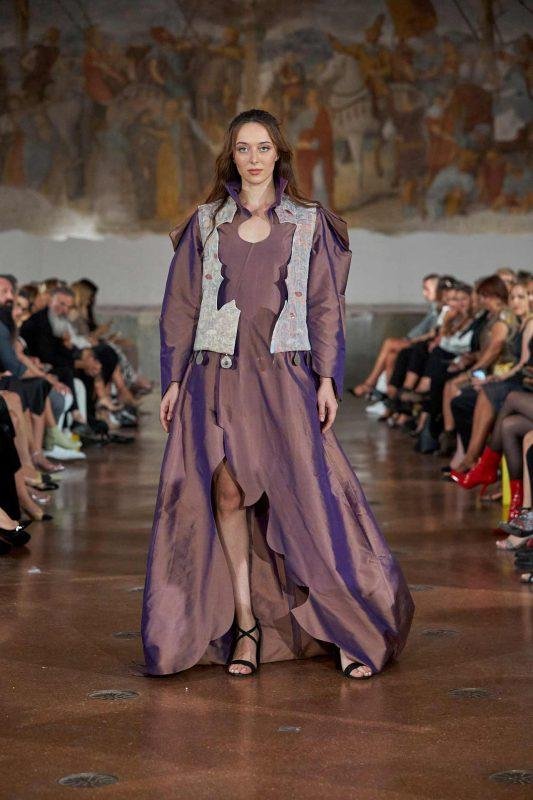
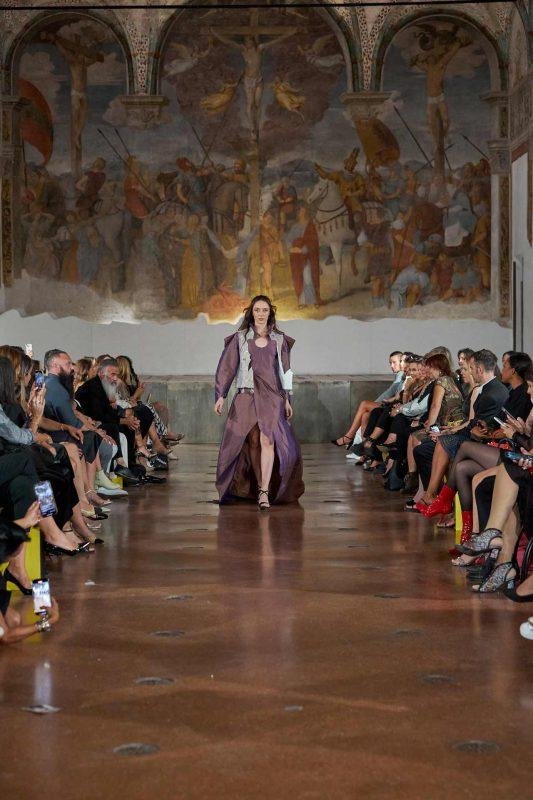
The Shah Abbasi flower is, in fact, a stylized depiction of the narcissus—formed by the repetition of two circles and two leaves. It couldn’t be described more simply, and yet this flower remains mysterious: mysterious in the sense that its creator and the time of its origin remain unknown. Historical evidence suggests that the Shah Abbasi motif existed as early as the Achaemenid era, but it reached its peak during the Safavid period, especially under Shah Abbas I.
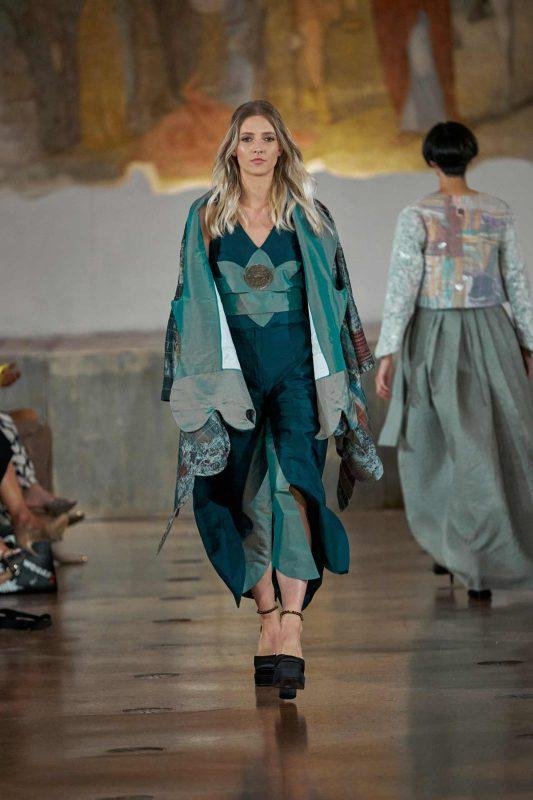
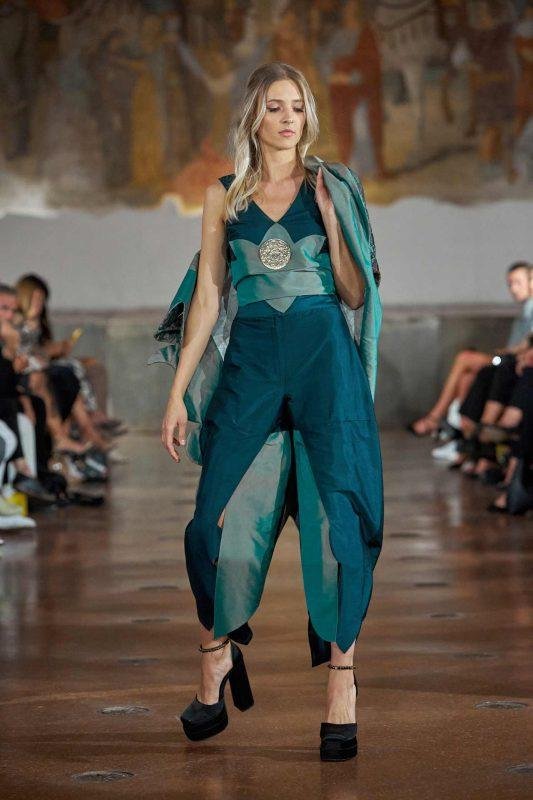
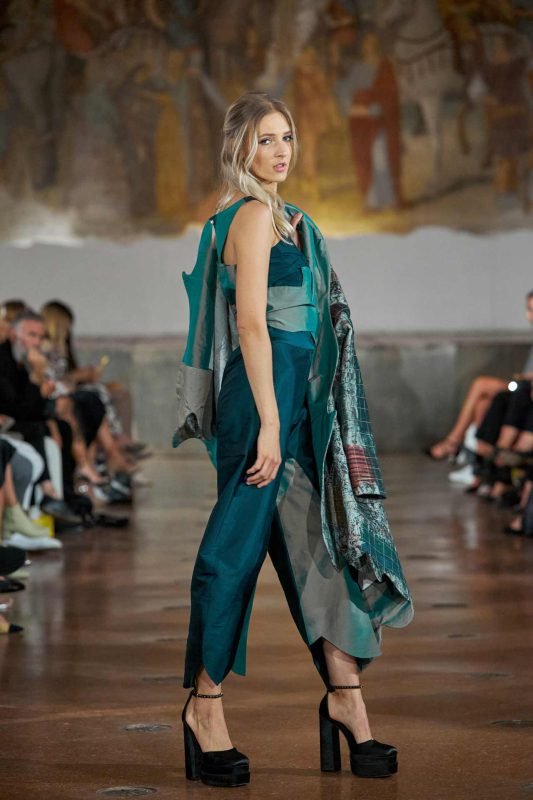
Shah Abbas I, during his powerful reign, placed great importance on the arts and artists. He established numerous large workshops dedicated to carpet weaving and textile production. Many historical records show that the Shah Abbasi flower was widely used in the carpets of that time, and the motif was named after Shah Abbas himself. Some regarded it as a symbol of vitality, while others in ancient times saw it as a representation of the sun.
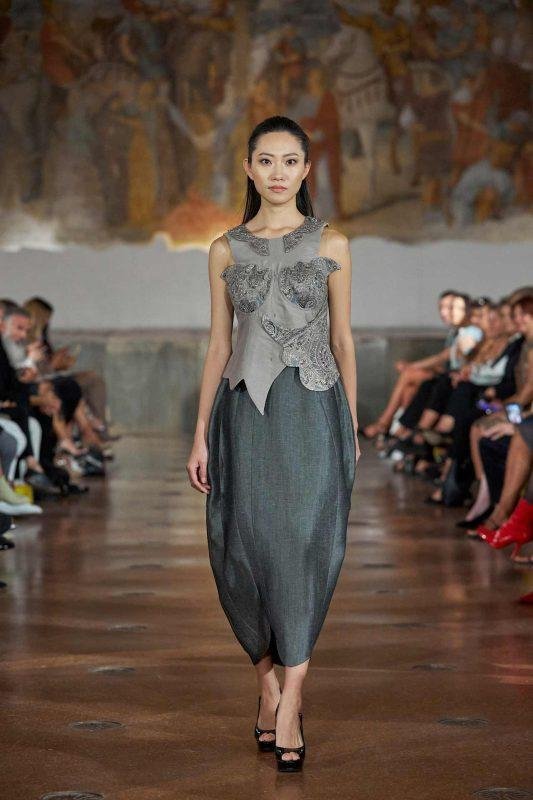
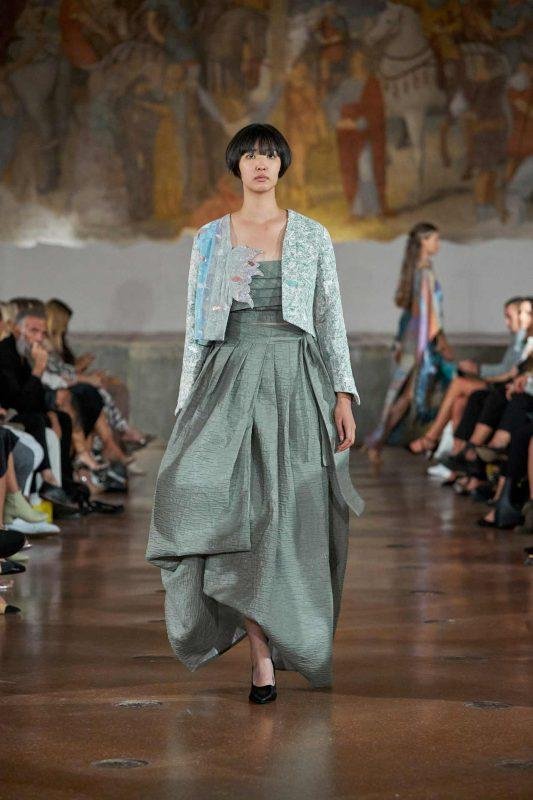
With this rich and fitting introduction, we aimed to shed light on the Shah Abbasi flower and its deep historical roots. In the final weeks of summer, Naghmeh Kioumarcy Fashion House, inspired by the Shah Abbasi motifs and the grandeur of the Safavid era, created the collection “Flowers of Shah Abbas Garden”—a line that reveals the majesty and royal elegance of that time through its designs.
This collection will be showcased in Milan Fashion Week with 12 distinct looks, once again ensuring that, through the vision and dedication of Kioumarcy Fashion House, the legacy of Iranian art leaves a lasting impression on the global memory of fashion.
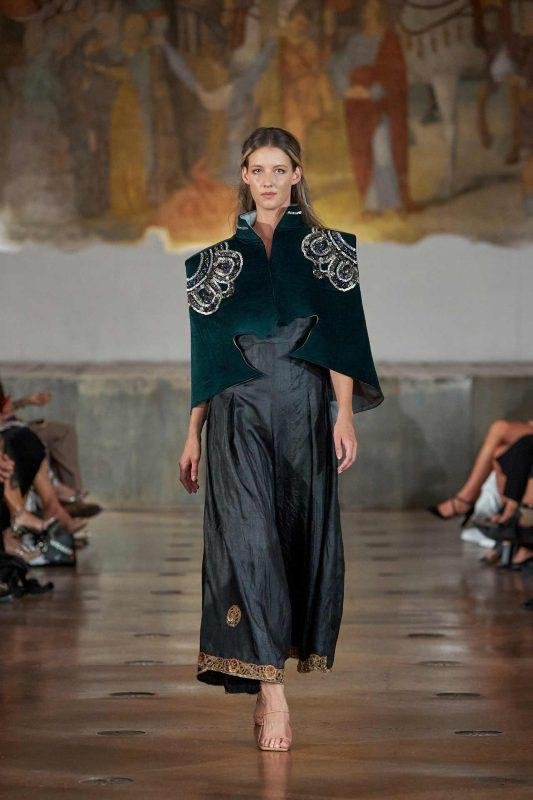
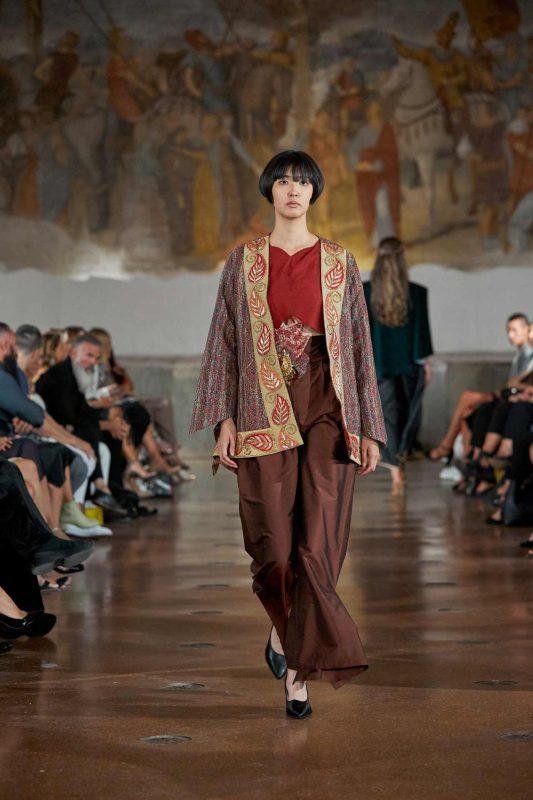
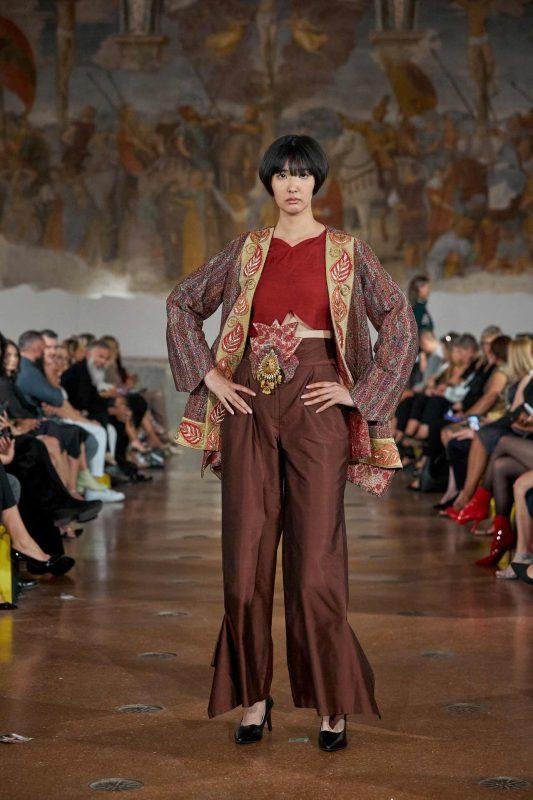
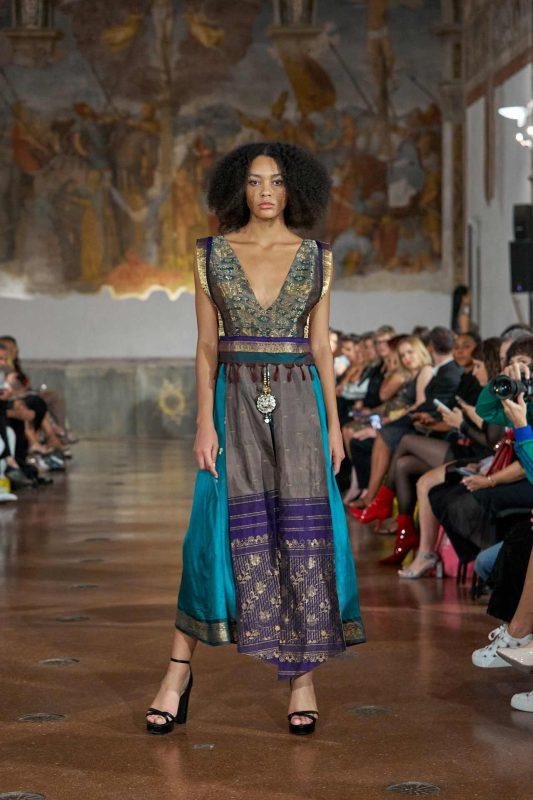

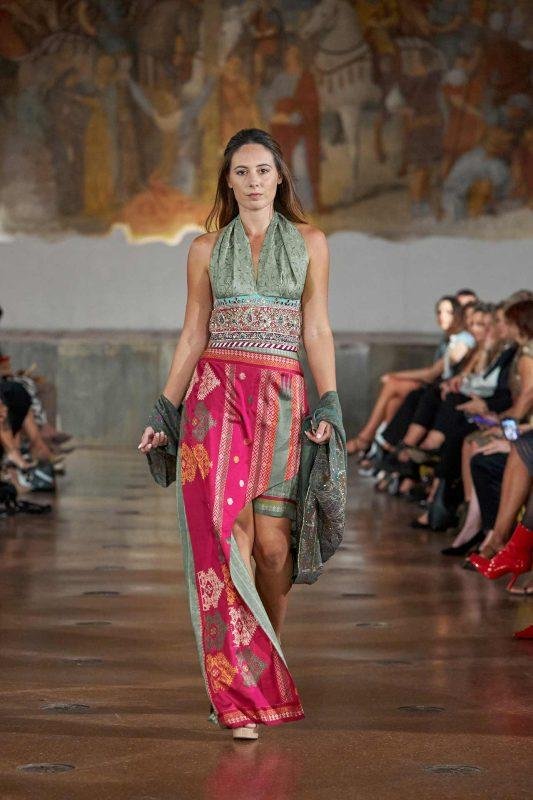
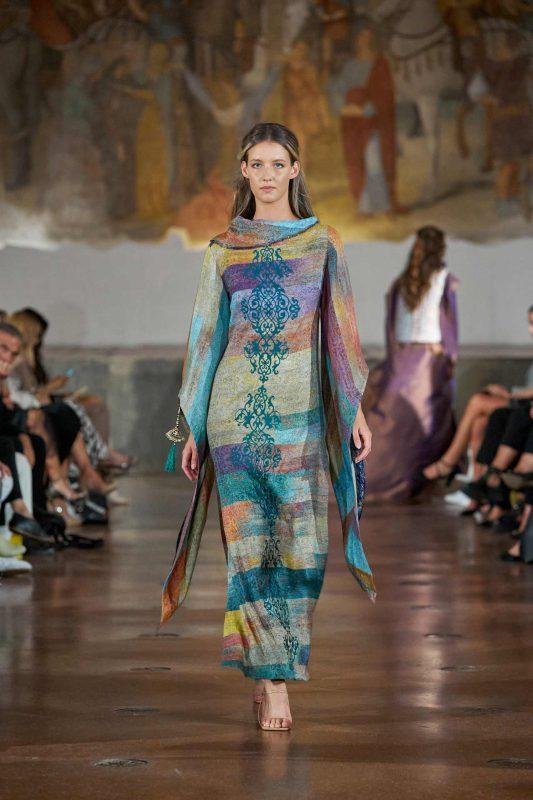
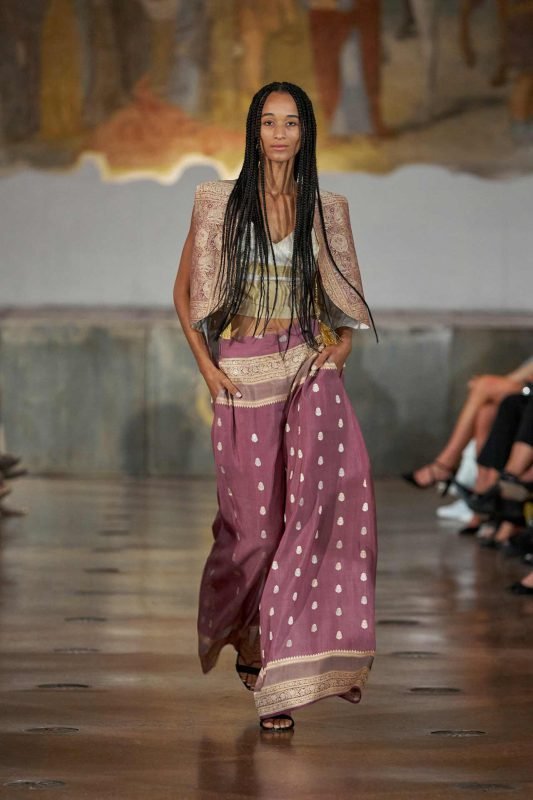
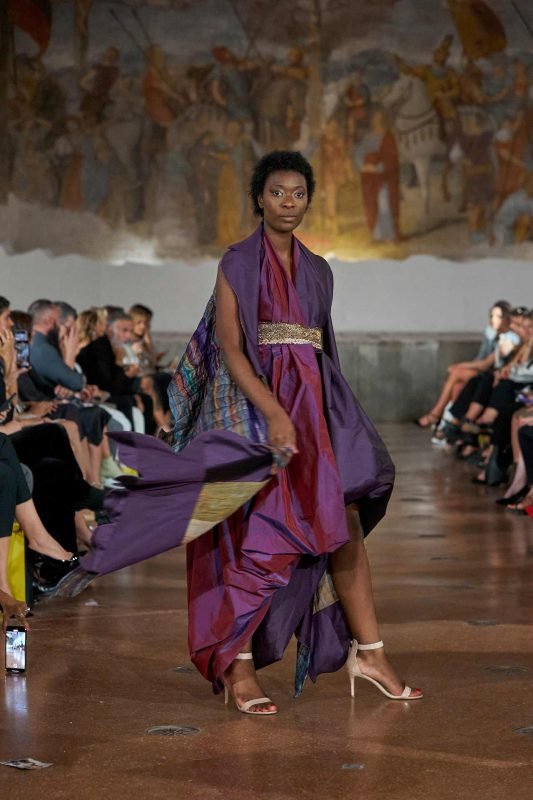
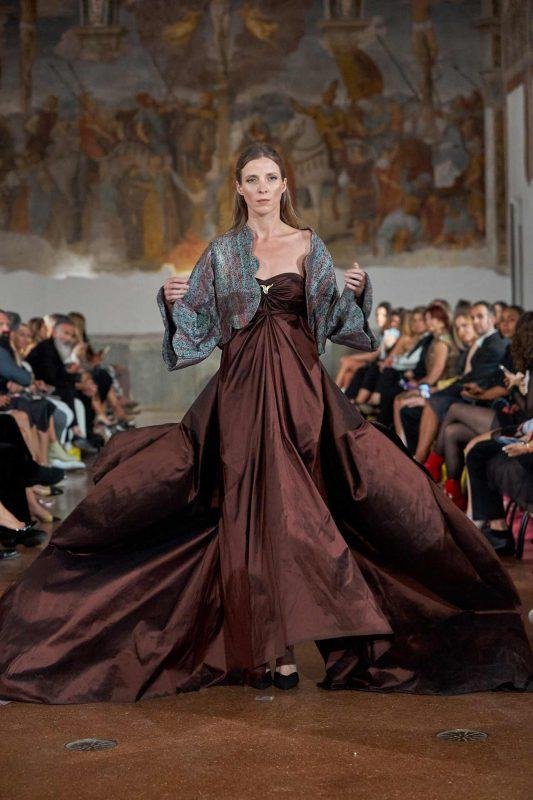
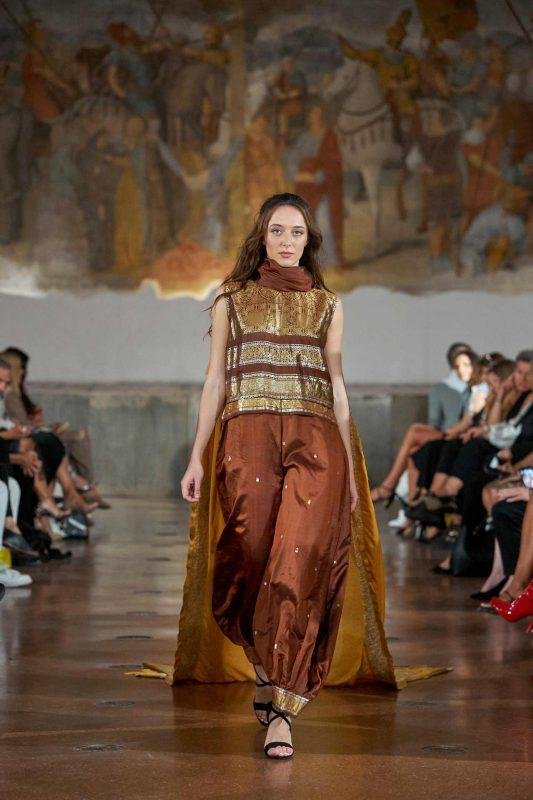
Every element used in this collection—from custom-made fabrics, raw silk, and termeh textiles to buttons, pins, and intricate details—draws direct inspiration from the Safavid era. The gowns feature flowing silhouettes with cuts shaped like the Shah Abbasi flower, adorned with hand-embroidered beadwork and accessories crafted with traditional ghalamzani metal engraving techniques. Together, these pieces offer a glimpse into the splendor and grace of Iranian artistry.
The unveiling of this exceptional collection in Iran will coincide with the beginning of autumn.



